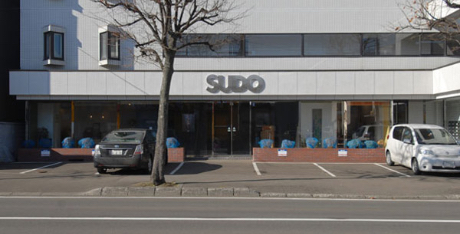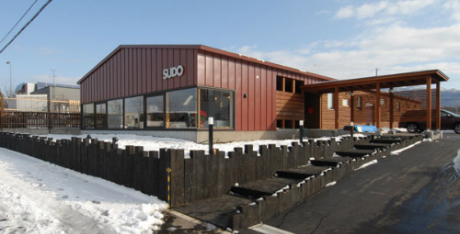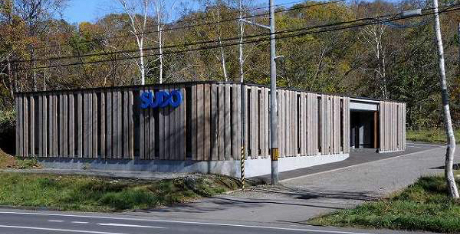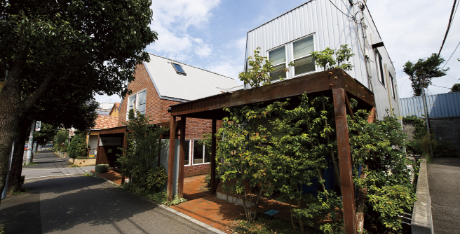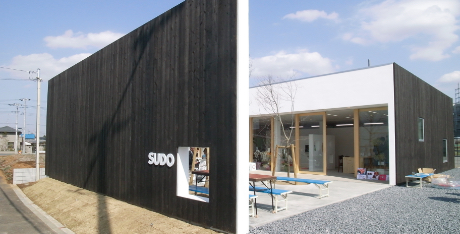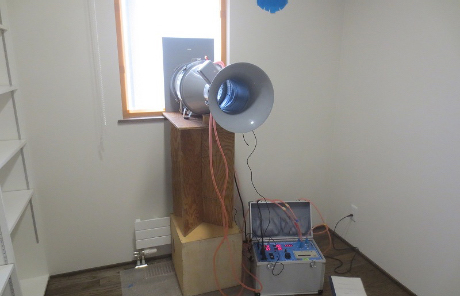
Implementing precise air-proofing
We believe weather-proofing is essential to a good building, and so we measure our weather-proofing precisely and comprehensively. Even next-generation standards (2.0 cm²/m²) are far exceeded (0.5 cm²/m²) by a SUDO home.
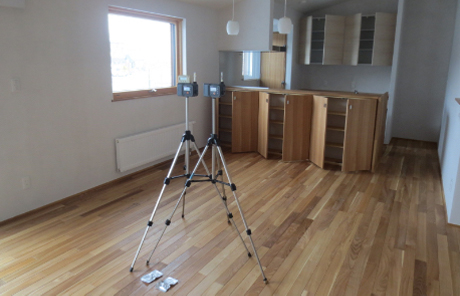
Controlling chemical concentrations (VOCs)
Just before completing a home, we are sure to measure the interior concentration of a variety of chemicals. You can rest easy in the knowledge that your home is safe, exceeding standards for formaldehyde and five other dangerous chemicals.
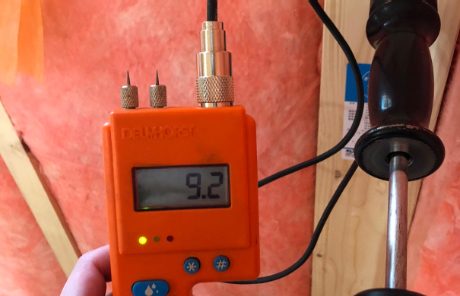
Measuring moisture in the timber
The moisture content of the timber has a strong relationship with the strength and durability of that timber, and therefore of the home itself. A SUDO home is made from timber that has had its moisture content measured both when it enters the factory and when the house is erected.
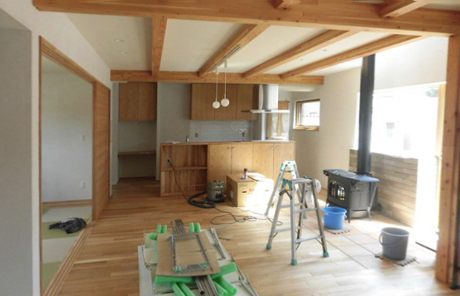
Measuring ventilation
Before handing off a house, we are always careful to check the ventilation so that we can give the client precise numerical measurements. With 10-minute checks of the home’s ventilation efficiency, we ensure that air is being evenly distributed throughout the house.
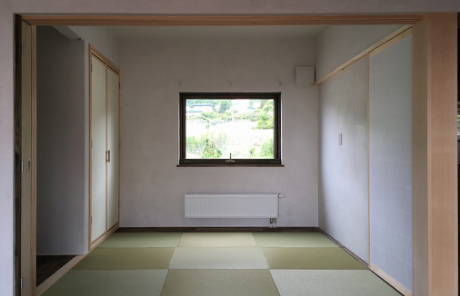
A temperature difference of 1℃
Because a SUDO home is carefully weather-proofed, insulated and heated centrally, the surfaces of the floors, the walls and the ceilings have a temperature difference of just about 1℃, for a comfortable interior space free of drafts.
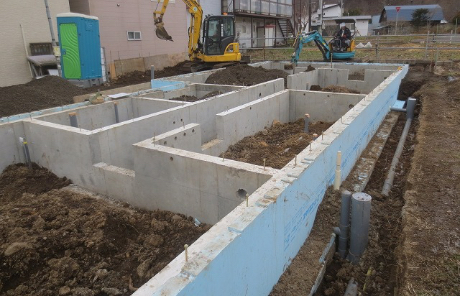
Foundation insulation
Each of our foundations is completely encased in insulating material, keeping the temperature under the floors roughly uniform. This makes for warm floors and not a chance of water damage.
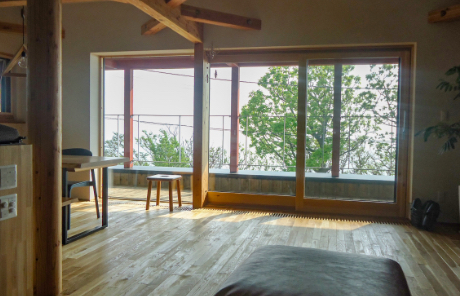
Our use of wooden sash windows
We use sash windows with three layers of glass, known for their insulating and highly airtight qualities. A full 10.5 centimeters of glass has almost the same insulating power as timber. Also, the exteriors make use of aluminum, which means they require next to no maintenance.
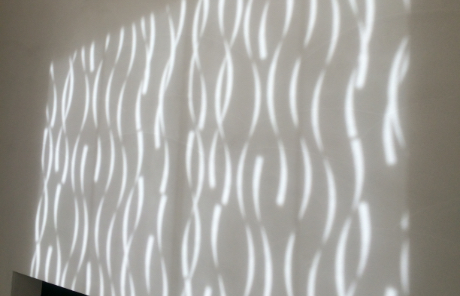
Diatomaceous earth plaster
We have adopted the use of diatomaceous earth wall plaster, which not only cleanses the air but also regulates moisture and deodorizes. By deploying the soft material, we can create an interior environment that is gentle on both the people and the residents.
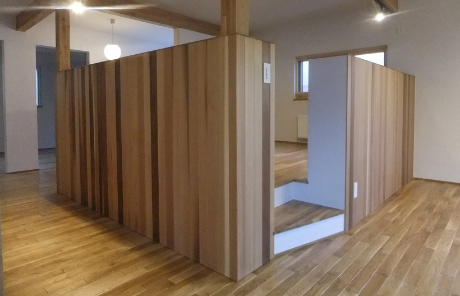
Use of Japanese cypress
We use Japanese cypress-based bonded lumber, which is strong and durable while containing not a single dangerous chemical. Though this part of the home is invisible, we remain uncompromising in our commitment to use healthy, natural wood.
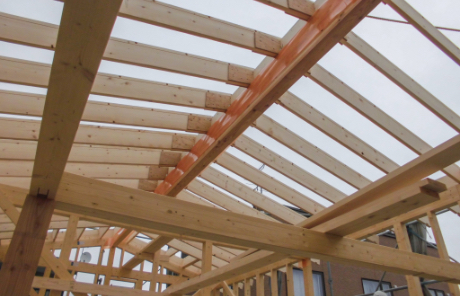
Usage of Hokkaido lumber
Our structures, exteriors and interiors are made primarily from Hokkaido lumber. Putting our beliefs about local production and local consumption into practice also helps cut our carbon dioxide emissions.
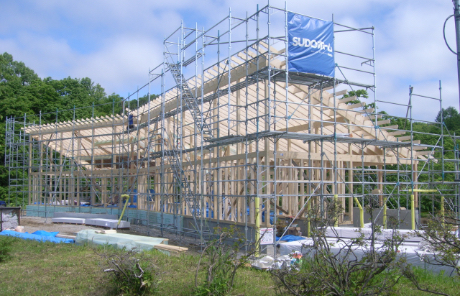
Construction planning
We give each of our clients a statement with detailed statistics, assuring them that the home exceeds all standards. We examine the foundation to ensure its strength and the walls for their durability, and we check the home’s balance. Our homes are full of natural materials that are easy on the human body, making for a new life in a comfortable living environment.
Insulation technology/Ceiling: HGW300mm, Wall: HGW205mm, Foundation: XPS 100mm High insulation material
Insulation method/Ceiling, Wall, axis between insulation plus additional insulation, foundation: external insulation
Heating method / Central heating based on hot water radiation method
Implementation of air tight measurement/substantial clearance area (Value C) in average0.4cm2/m2 airtight technology
High performance wooden sash/insulation and air tight adopting preeminent Low-E Triple glass and 16Ar
Use of natural material/Even foundation that become invisible, health friendly material is considered, use of white cedar lamination
Hokkaido material/Mainly Hokkaido manufactured material is used for construction, exterior, interior
Implementation level of concentration of chemical substance lies under the standard criteria value of Japan
Implementation of Water content in wood material/water content in wood is tested twice to evaluate strength and durability of residence
Implementation of ventilation airflow measurement/ Ventilation frequency is set by law (0.5times/h) testing ventilation balance and uniformity of housing
Indoor top to bottom temperature difference 1 degree Celsius (amenity)/Realization of high insulation, high ventilation, planning ventilation, central heating
Structural calculation/ground survey, wall quantity (balance check of building)
Inhouse carpenter/offering defined quality, speedy and reliable maintenance

